There is power in myth. It can be used to form a nation, to back up it’s claim for wider borders, to veil its abusive behaviour and to transform violence into glory and heroism.
This is my contribution to the weekly #artexplosion competition with the theme “Power”.
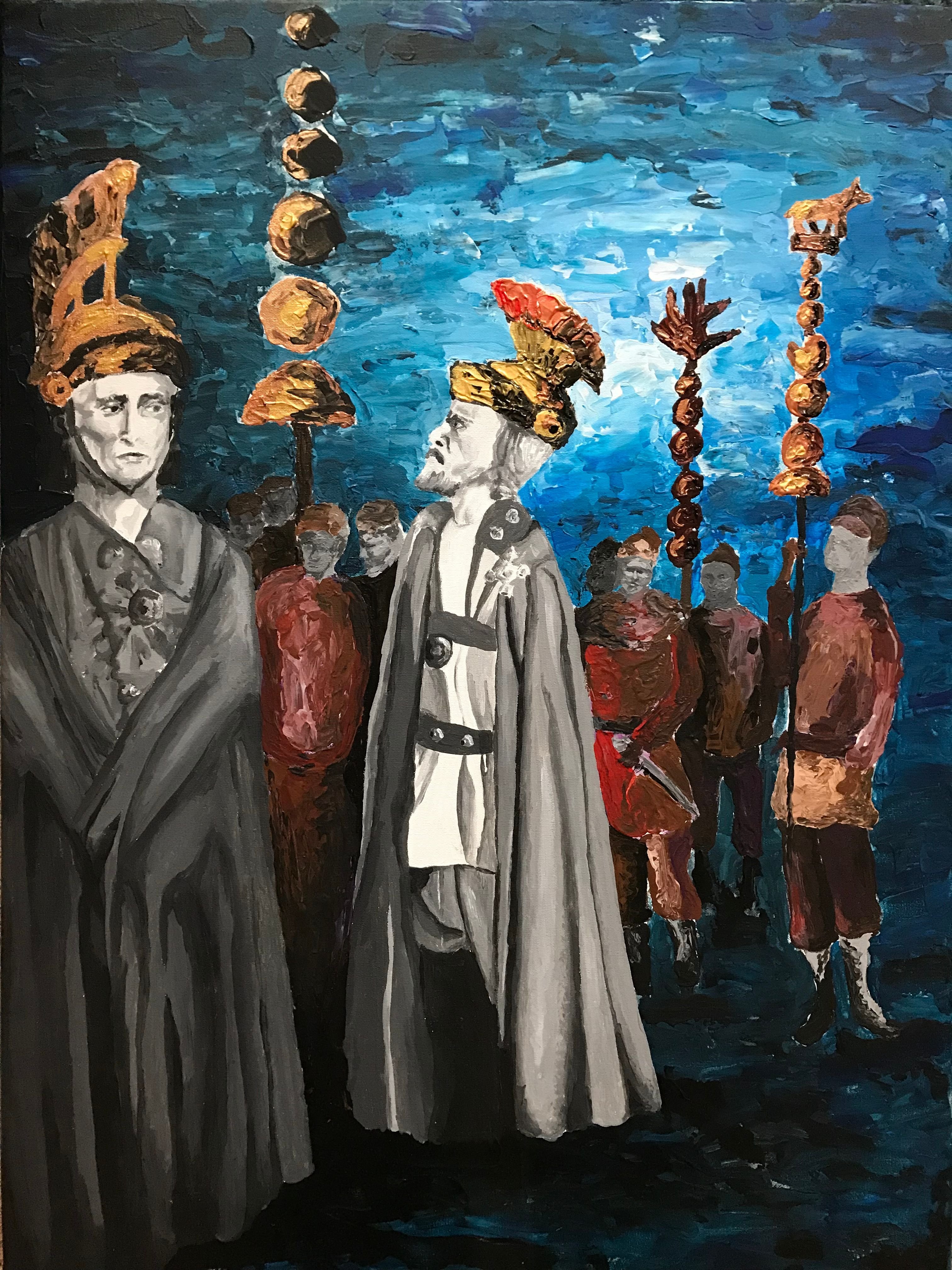
It‘s Armenius not Hermann
Acrylic on canvas, 80 cm x 60 cm
Some weeks ago, I visited the Teutoburger Wald, a region which is famous for two often abused monuments. Firstly, the Externsteine – strangely formed rocks which are believed to be a place of magic and energy since prehistoric times, a little bit like the much better-known Stonehenge - and the Hermanns monument, a man-made sculpture of more than 50 m height, build between 1838-1875. Both are exploited by German nationalism and today they are slightly dubious tourist (and Neonazi) attractions.
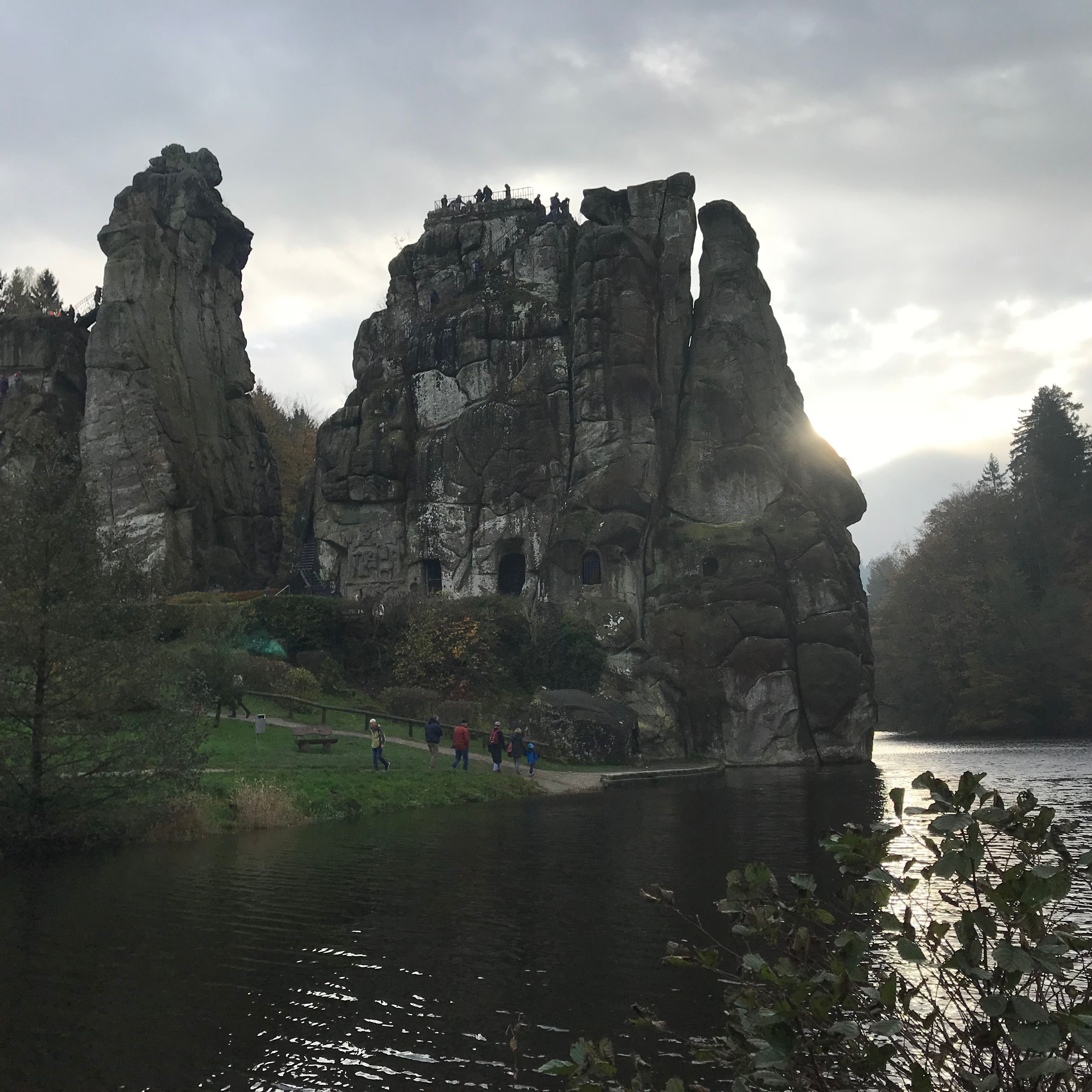
Nevertheless, both monuments are impressive as is the surrounding forest, which was believed to be the battleground of the famous Varusschlacht (Varian disaster) and so the myth behind the Hermanns monument. For me the cult of personality which was formed around the figure of Hermann was astonishing and led me to the above shown painting. But first the story of Hermann who in fact wasn’t named Hermann. Throughout the post I will present you photos of my painting process.
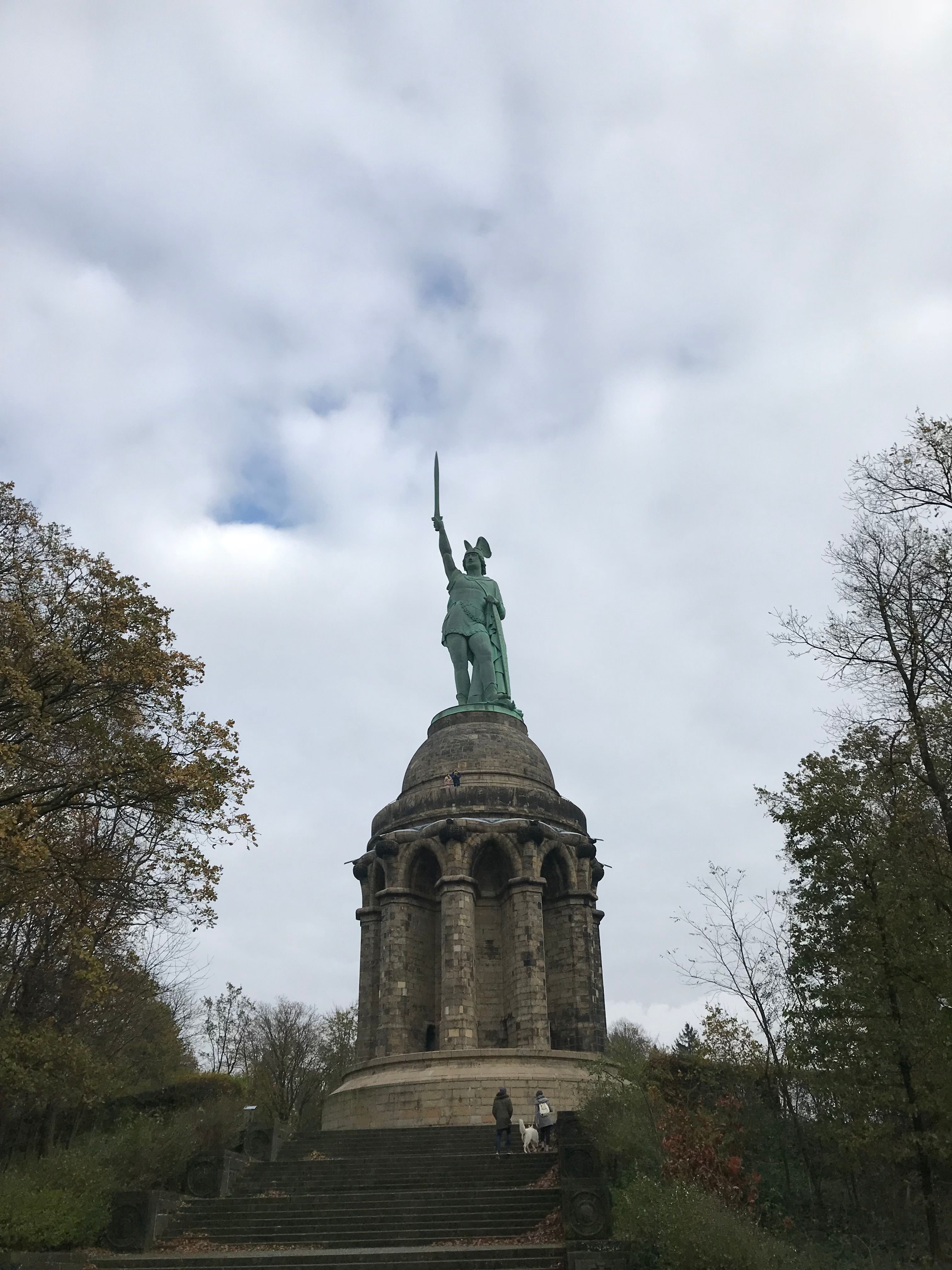
The Varian disaster refers to a famous battle which took place during the year 9 CE. The region of the Cheruscans was under the command of governor Varus. It was the farthest reach of the Roman imperium into the Germanic territorial. Varus is described later as a ruthless and greedy leader who aroused through his hard authority the resistance of the Germanic tribes. But this may be a topos of the Varus-critical historians like Tacitus and others who stylised him into a cruel anti-hero. Varus was in command of 3 legions, 3 cavalry units and 6 cohorts which consist of roughly 20.000 armed forces, accompanied by thousands of horses and pack animals, but this was only a small part of the Roman presence in Germania. The main forces were send away to fight at the Balkan region. Many of his soldiers were auxiliary troops which consisted of Germanic mercenaries.
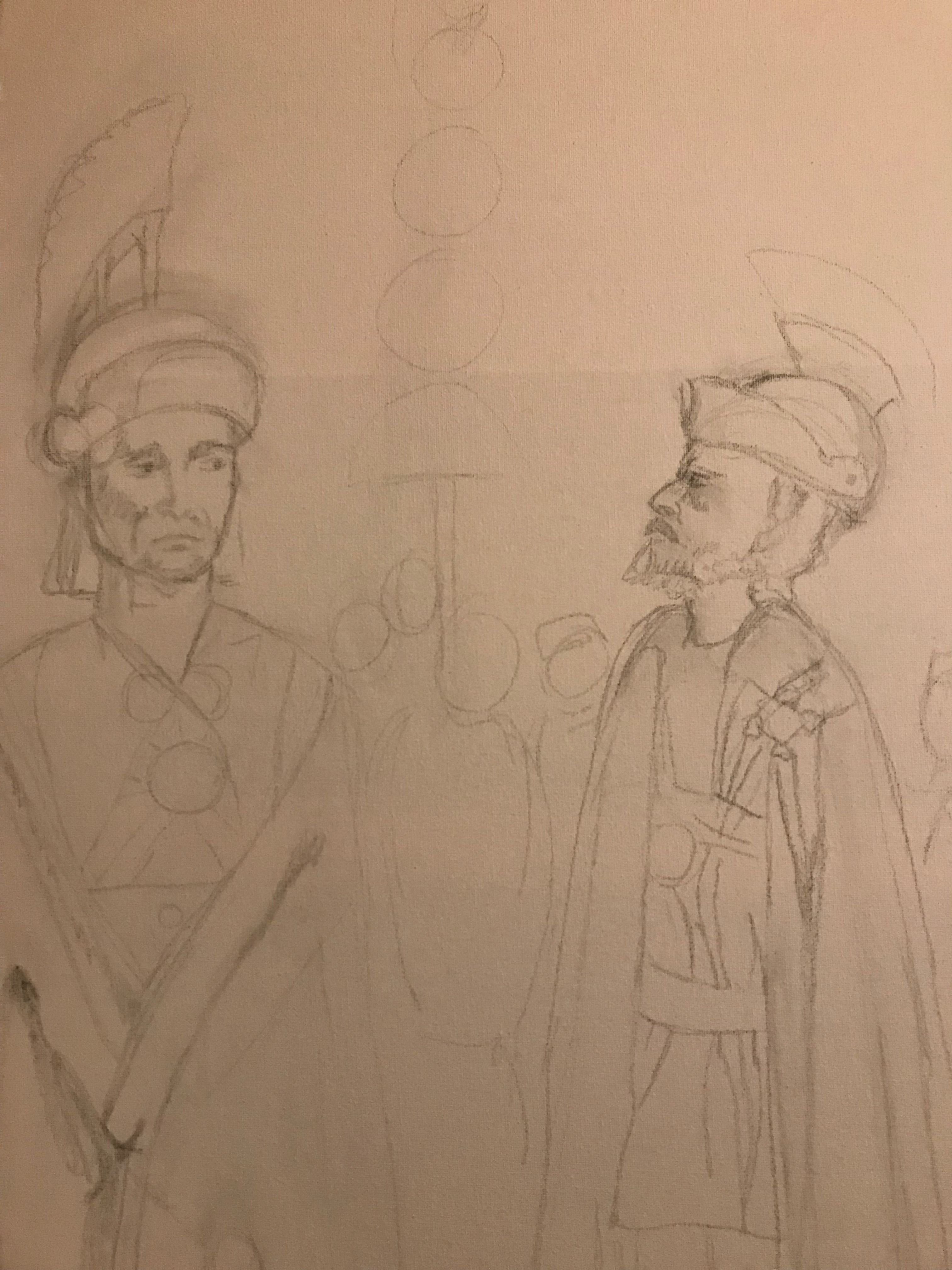
Varus antagonist was Arminius whose name was later germanised into Hermann. He was a leader of a part of the Germanic auxiliary troops and so had access to Varus. He used the absence of a great part of the roman army and conspired against the roman governor. He told Varus of a (in reality non existent) rebellion in northern Germania. Varus believed him and marched into a trap and was completely defeated. The Roman historians describe vividly the for them alien northern landscape with deep forest, swamps, and moss. They speculated, that the roman soldiers were not equipped for this kind of territorial and definitely not for fighting a guerrilla battle inside these forests.
After loosing this battle Varus killed himself and the progression of the Romans into Germania was finally stopped.
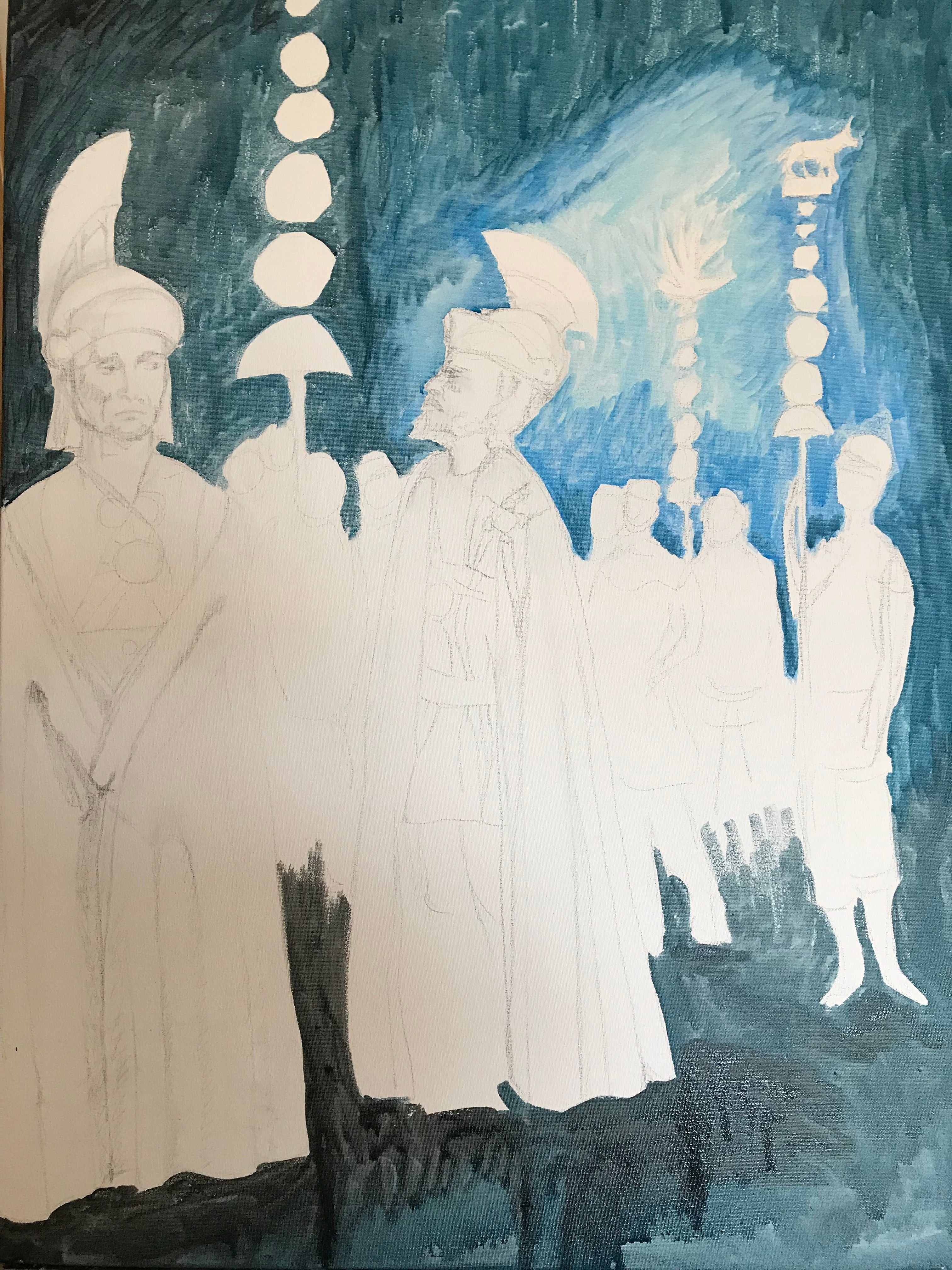
Unknown Arminus and non-existent Hermann
Arminius youth and his family ties are not well known, nevertheless tales about his growing up in Rome and about his family members are mostly presented as facts today. Perhaps the missing facts about the person Arminius even helped to transform him into a (mythical) hero.
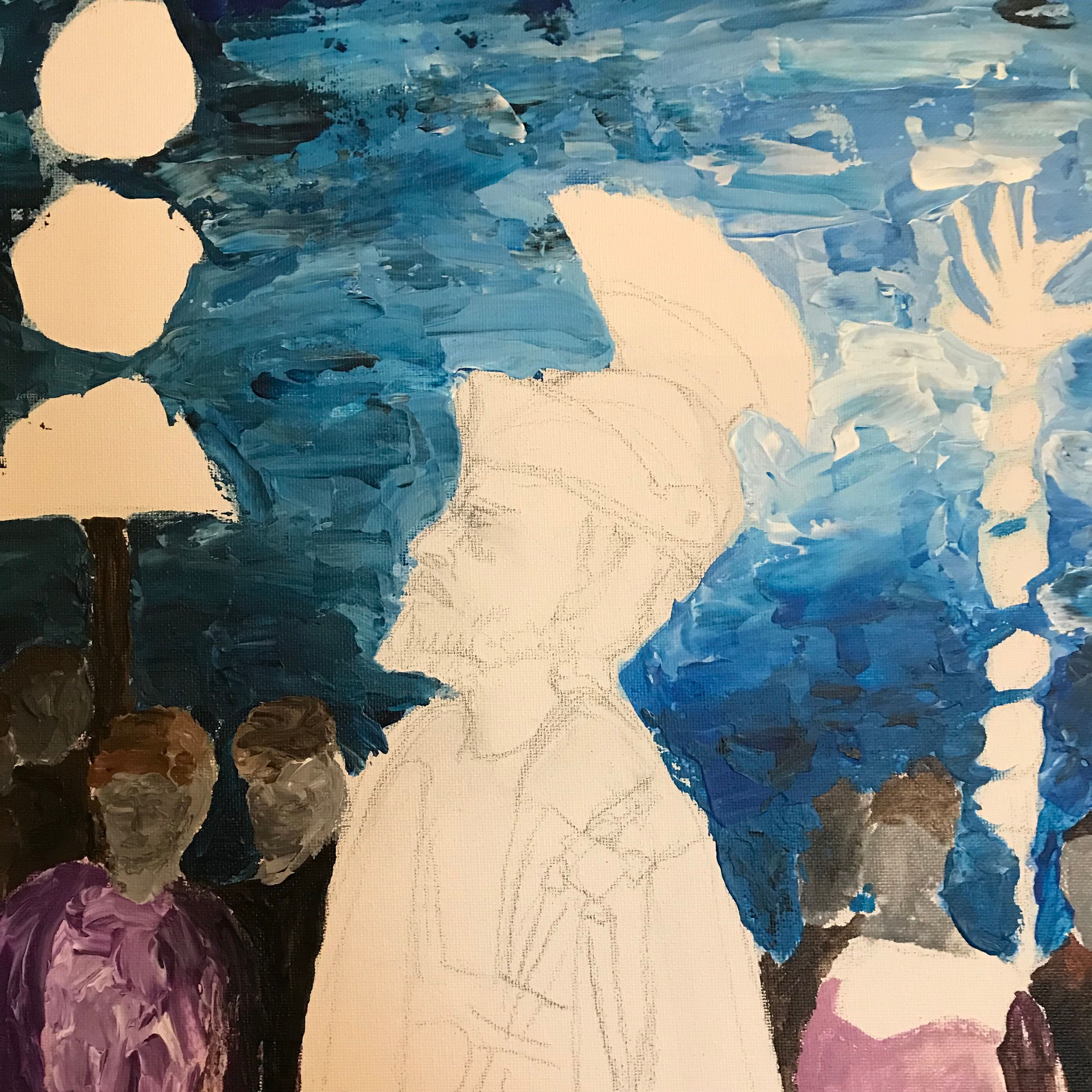
Arminius was the son of a Cheruscan leader, his mother is unknown. Arminius was allegedly send at a young age as a hostage to Rome where he was raised by a Roman family and named “Arminius”. But not only is Arminius upbringing unknown, his name also holds unsolved questions. The historians disagree as to whether the name Arminius refers to an Etruscan dynasty or may be a cognomen which he gained because of a function as a military leader in Armenia. His naming as “Herman” is often justified by the claim of it being the translation of the Roman name into Germanic, but this is not true. Hermann derives from Germanic “Charioman” which means army leader. His renaming into Hermann happened around 1530 in the cultural environment of Martin Luther. From there on Arminius/Herman was modelled into a figurehead of the German nationalism.

On the painting you can see a remote Varus surrounded by his troops and an angry Arminius who just in this moment decides to betray Varus. This is symbolised by the soldier directly behind Arminius who holds the gladius to literally stab Varus in the back. I have chosen to present the whole scene like a theatre play of the 1920 because for me this refelcts the artificialness of the whole Arminius tale: All is staged, invented and inflated. Both Varus – as the naïve but cruel leader – and Arminius – as the betraying but glorified hero – are without colour, they are only generic portrayals. They are the vessels to be filled with crude ideas of nation and pride.
